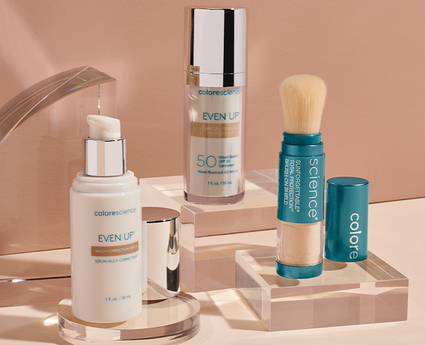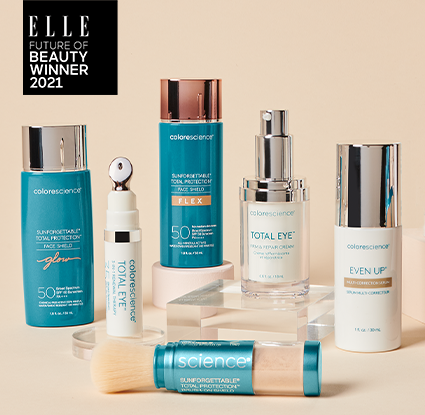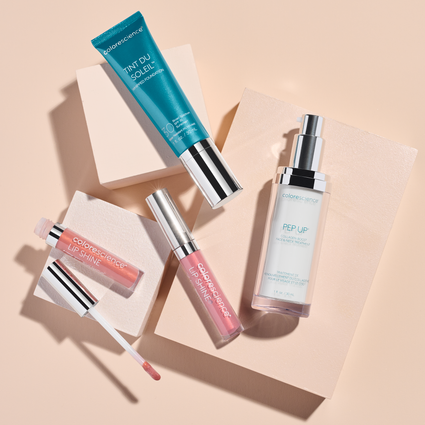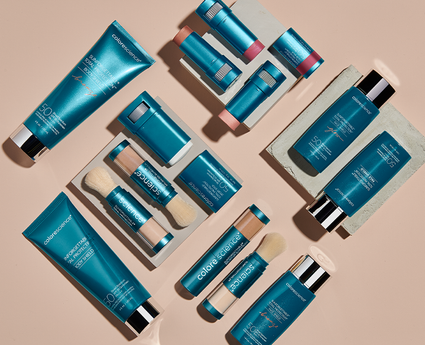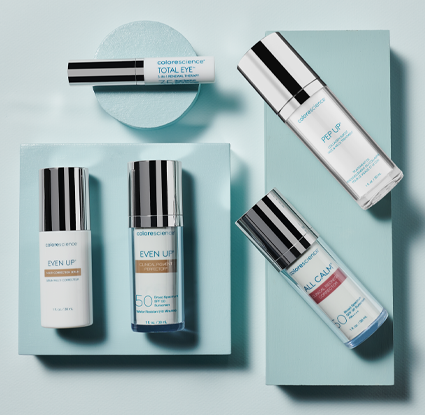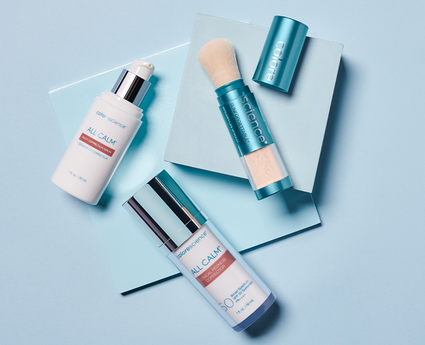Sun Spots on Your Face
Enjoying time out in the sun is a beloved pastime for many. However, prolonged sun exposure can have damaging effects on your skin, including sun spots. Sun spots are very common, especially when you spend long periods of time in the sun. They can appear anywhere on your skin, from your face to the back of your hands, and look like flat, brown spots.
While sun spots are generally harmless, they can still make you feel insecure about your complexion. Above and beyond appearances, it’s also important to monitor them, as sun spots can be easily confused with more serious skin conditions.
However, the good news is that there are plenty of ways to prevent and treat sun spots on your skin. While they might not be dangerous, it is still something to be aware of before you spend all day basking in the hot sun without reapplying sunscreen. To help you better understand sun spot care, we’ve put together this guide.
- What are sun spots?
- Why am I getting sun spots on my face?
- How do you get rid of sun spots on your face?
- Are there any risks to having sun spots?
- How to prevent sun spots on your face
What are sun spots?
Sun spots are a form of hyperpigmentation that is caused by UV exposure and tend to appear around the age of 40. However, that isn’t to say they can’t appear sooner—everyone’s skin is different. Sun spots might also be referred to as age spots, solar lentigines, or liver spots.
Sun spots on your face can easily be confused with other forms of hyperpigmentation, like birthmarks, melasma, or freckles, but they are easily distinguishable. Sun spots are flat spots that can vary in shades of brown, while birthmarks can either be raised or flat and vary in color. Melasma, on the other hand, causes gray-brown patches on the skin, while freckles present as small specks and typically become less noticeable as you age.

Being able to distinguish these different pigmentations on your skin will help you find the right way to prevent and treat them.
Why am I getting sun spots on my face?
If you are starting to develop sun spots on your face seemingly out of the blue, there is actually a reason for them. Sun spots on your skin are caused from extended exposure to UV rays. Once your skin is exposed, it increases production of melanin, which is the pigment that gives your skin color. Prolonged exposure to UV rays can cause your skin to form clumps of melanin, which results in sun spots.
You can get sun spots on any part of your body that is exposed to sun, but these are where they most commonly appear on the body:
- Face
- Hands
- Chest
- Shoulders
- Back of hands
Certain people are also more likely to get sun damage than others as everyone’s skin is affected by UV rays differently. People with lighter skin are more likely to get sun damage than those with darker skin, although it is possible for both. If you have a family history of skin cancer, have freckles before tanning, or have certain autoimmune diseases, it is crucial you take the proper measures to protect your skin from UV exposure.

If you already have sun spots on your skin, don’t panic just yet. Of course, the ideal solution is prevention, but thankfully there are a few ways you can treat sun spots once they’ve already formed. In the next few sections we will cover how to get rid of sun spots.
How do you get rid of sun spots on your face?
Getting rid of sun spots on your face depends on the severity of your condition. There are a few ways you can treat sun-damaged skin. Some treatments for sun spots on your face are stronger than others, so it is ultimately up to your personal preference for your course of treatment. Below we will delve more into the various treatment options currently available for sun spots.
At-Home Treatments
There are many ways you can treat sun spots right from home. If you’re looking for an easy yet effective at-home treatment, our Even Up® hyperpigmentation regimen contains several products that can help get rid of sun spots and improve your complexion. This customized skin care regimen is curated for treating brown spots and hyperpigmentation and follows three steps: the first step is treatment, second is UV protection, and third is hydration.

There are some DIY at-home treatments for sun spots, but it’s important to be careful when DIY-ing skincare as people can have reactions to certain substances, especially when it mixes with other products they may be using. With that in mind, here are some DIY solutions that can help with sun spots:
- Aloe vera contains aloin and aloesin which can lighten hyperpigmentation.
- Apple cider vinegar contains acetic acid which can lighten sun spots.
- Green tea has been found to have anti-melanogenic effects, meaning it can help with depigmentation.
- Dietary and topical vitamin E oil has been found to lighten dark spots.
Note that you’ll need to use any treatment solution regularly to see results.
Professional care
If you want to go to a dermatologist for sun spot removal on your face, here are a few treatment options you may consider:
- Intense pulse light (IPL): IPL heats and destroys melanin with pulses of light energy
- Laser resurfacing: A device delivers pulsating laser beams to the outer and underlying layers of skin, causing it to regenerate, which helps get rid of sun spots.
- Chemical peels: An acidic solution is applied to the skin, which then causes wounding that results in peeling of the skin. As the skin is replaced, sun damage (including sun spots) are removed.
- Microdermabrasion: A device with an abrasive tip is used to remove the outermost layer of the skin, which helps to rid sun spots from your face.
- Microneedling: This procedure involves small needles pricking the skin to increase collagen production.
Are there any risks to having sun spots?
After learning more about sun spots, you may be wondering: are there any risks to having them on your skin?
It is important to note that sun spots are not harmful because they are non-cancerous. People may decide to treat sun spots for purely cosmetic reasons, for example they might make you feel insecure or make you appear older than you are.
However, that doesn’t mean that sun spots should be taken lightly. You should still regularly keep an eye on them, just in case. This includes knowing the difference between a sun spot on your face vs skin cancer. For instance, if you see raised spots on your face, it is a good idea to call your dermatologist.
You should always take note of any rapid changes, such as a change in size or shape. Remember the ABCDE rule when examining spots on your face:
- Asymmetry: One half of the spot changes shape.
- Borders: The edges of the spot become irregular or uneven.
- Color: The color of the spot varies.
- Diameter: The spot is bigger than 6 millimeters in diameter.
- Evolving: The spot changes in any way.
If you notice any of these happen to a sun spot, you should schedule an appointment with a dermatologist as soon as possible to ensure it’s not something more serious.
How to prevent sun spots on your face
So, now that you know how to get rid of sun spots on your face, let’s talk about how to prevent them. Remember, prevention is the best treatment.

Beyond just sun spots, it is important to protect your skin from UV exposure for a myriad of reasons. About 90 percent of skin aging is caused from the sun, so it’s crucial to take the proper measures to protect your skin. This goes for all periods of your life, as sun damage is cumulative. Did you know that about only 23 percent of lifetime exposure occurs by age 18? This means you have to protect your skin from UV rays throughout your entire life.
Here are a few ways you can prevent sun spots on your skin:
- Apply sunscreen daily. Sunscreen is the number-one rule for sun protection. Our Sunforgettable® Brush-On Shield is an easy-to-apply on-the-go sunscreen that provides protection from UVA and UVB rays as well as environmental factors.
- Reapply sunscreen throughout the day. You should reapply sunscreen every two hours for consistent protection. And if you’re sweating or swimming, you should reapply at least every 80 minutes.
- Shade your face. Wear hats to protect your face whenever you’re in the sun and sit under umbrellas or shade when possible
- Stay out of the sun when it’s the strongest. The sun is considered to be at its peak strength between 10 a.m. and 3 p.m.
- Avoid tanning. You should avoid laying out for long periods of time and stop using tanning beds altogether as it can significantly contribute to your risk of sun damage and even skin cancer.
- Wear protective clothing. Protective clothing such as a wide-brim hat, sunglasses, and long sleeves, can all help shield your body from the sun’s harmful rays.
Address sun spots for the clearer complexion you desire
You should now have a better understanding of what sun spots are and how to prevent and treat them. Just remember that sun spots aren’t dangerous, they are natural and most people treat them for purely cosmetic reasons. If you want to feel more confident about your complexion, there are many ways you can treat sun spots, whether that be at home or with a professional dermatological treatment.
Above all else, it’s important to protect your skin at all times. Colorescience offers various skin care products, like sun protection to help prevent sun spots and hyperpigmentation correction serum to help get rid of them. Take the proper steps to protect your skin from sun damage and keep your complexion looking its best.

